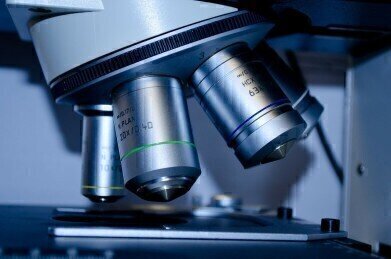Microscopy & microtechniques
4 Applications of Microscopy and Imaging
Nov 23 2021
Since its invention over 400 years ago, the microscope has opened our eyes to a veritable world of living things all around us. The ability to magnify a sample to many times its actual size has allowed to us to surpass the capabilities of the human eye and unlock a wide number of breakthroughs in many aspects of science and medicine.
Of course, the first microscope was made in 1590, and the four centuries that have passed in the interim mean that it would look unrecognisable from the hefty laboratory behemoths we wield today. With our advancing technological knowledge, we have been able to apply the practices of microscopy and imaging to an ever-increasing number of applications, with widespread ramifications for virtually all facets of human life. Here is a broad overview of some of the most important.
Biological sampling
Using sophisticated imaging techniques, researchers are able to visualise the structure of tissues and biomaterials of model organisms and humans in a non-destructive manner. X-ray technology has been particularly useful in this respect, since it allows for dissection of thick samples without drawing blood or causing discomfort. Recently, advances in time-resolved electron microscopy have improved imaging of biological samples even further by enhancing the contrast and resolution of the image in question.
Material development
When fashioning alloys or processing plastics, for example, it’s imperative that the manufacturers fully understand the properties of the materials they are working with. Microscopy and imaging techniques can greatly help in this regard by indicating such physical and mechanical characteristics as strength, ductility and hardness, as well as its resistance to variables such as temperature, corrosion and pressure. This knowledge can then inform the purposes and applications for which the material can serve.
Electronic devices
Today, the sophistication and complexity of computer chips and other electronic devices has reached such a point that penetrating their outer casing can, itself, cause irrevocable damage to the instrument. However, seeing inside such devices is sometimes essential for understanding malfunctions and performing repairs. Microscopy and imaging techniques are able to give a visual picture of the interior of the device in question, without damaging either its outer or inner contents.
Fossils and other fragile materials
When analysing fragile materials such as fossils – or indeed any other delicate element, including bone material, matrix composites and fibre-reinforced plastics, all of which are commonly used in bioengineering – it’s absolutely crucial that no damage is inflicted upon the specimen. The highly brittle state of the materials makes handling it unadvisable, so the use of sensitive imaging techniques (such as helium microscopy) can bypass this problem by offering researchers an in-depth representation of the item without harming it.
Digital Edition
Lab Asia 32.2 April
April 2025
Chromatography Articles - Effects of small deviations in flow rate on GPC/SEC results Mass Spectrometry & Spectroscopy Articles - Waiting for the present to catch up to the future: A bette...
View all digital editions
Events
Apr 22 2025 Hammamet, Tunisia
Apr 22 2025 Kintex, South Korea
Analytica Anacon India & IndiaLabExpo
Apr 23 2025 Mumbai, India
Apr 23 2025 Moscow, Russia
Apr 24 2025 Istanbul, Turkey



















